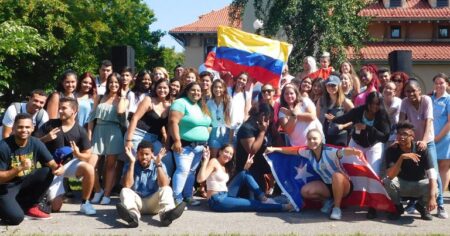
In our last episode Mark Hugo Lopez explores some of the complexities of Latino identity. As always we try to supply additional information on the topics our guests discuss. For your reading pleasure we add: Resources for Latino Diversity.
Identity
Mark helped start us off with a few links from the massive amount of information on the Pew website. To begin with, in recognition of Hispanic Heritage Month, Pew posted some interesting statistics on Latinos in the U.S. You can find that report here. He also shared a post that helps to explain identity issues which arise when defining who is Hispanic. Along the same lines, what name should be used to describe these large groups of people? For an explanation of how the terms Hispanic, Latino/a, LatinX, and Latine developed see this article by Antonio Campos. There’s a wonderful embedded seven minute video by Professor Cristina Mora, a University of California Berkeley associate professor of sociology and Chicano/Latino Studies which helps explain why there is an effort to create a national identity and visibility. You can also watch the video directly from YouTube. NPR’s podcast CODE SWITCH also has an episode explaining why identity in important for the census. As we know, the census is used to apportion federal representation and state support. The Latino community is historically under counted in the census.
Afro-Latino identity
Colorism is a serious issue in African American communities but it’s also a problem in Latino communities. In one Pew study Latino respondents say their skin color shapes their lives in America and impacts their opportunities. Mark mentioned respondents stated they are impacted by color even when they have self-identified as white. Pew also has some interesting data on how many Latinos specifically identify as Afro-Latino. Black Latino/as also experience racism within their communities. This is well documented in Brazil, in the Dominican Republic, in Cuba, in Puerto Rico, in Colombia, in Peru and throughout South America. Those prejudices are also present in the communities here. One Puerto Rican model/activist is trying to bring attention to the issue and the push for racial equity. Read about that fight for equity here. For a deeper historical dive read this article.
Similar issues but not the same
Latino communities face many of the problems that African American communities face. Latino students tend to be in schools where about 50% of students are also Latino. Disparate access to health care leads to premature death and chronic illnesses, such as the growing rate of diabetes in Latino children. COVID-19 took a huge toll on Latino communities where the death rate far exceeded the death rate of whites. Poverty impacts wide swaths of their communities, although data seems to show poverty rates are falling.. But at the same time, they face issues that African American communities do not. Language barriers and language discrimination can be significant barriers. In much the same way as Asians in America, Latinos also have to deal with white perceptions that they are foreigners, even when they are US born.
The issues our Latino allies face are complex, but the more we learn, the easier it will be to develop effective alliances. Hopefully our Resources for Latino Diversity will help get the process going.